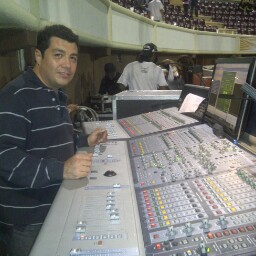Antonio H Davila
age ~53
from Long Beach, CA
- Also known as:
-
- Antonio D Hernandez
- Tony Davila
- Horacio Davila
- Tony D Avila
- Tony Divila
- Phone and address:
-
2318 Elm Ave, Long Beach, CA 90806
5625955641
Antonio Davila Phones & Addresses
- 2318 Elm Ave, Long Beach, CA 90806 • 5625955641
- Linden, CA
- Kissimmee, FL
- El Paso, TX
Name / Title
Company / Classification
Phones & Addresses
President
Antdav Trucking Inc
PO Box 1137, Lake Wales, FL 33859
49 Story Rd, Lake Wales, FL 33898
49 Story Rd, Lake Wales, FL 33898
Principal
Antonio Davila Hauling & Clean
Refuse System
Refuse System
17205 S Broadway, Gardena, CA 90248
Director
Southern California Presbyterian Homes
Housing Program · Housing Programs
Housing Program · Housing Programs
1919 Argyle Ave, Los Angeles, CA 90068
3234652082
3234652082
President
U.S. GARMENTS, INC
1753 Oak Grv Ave, San Marino, CA 91108
Resumes

Antonio Biaggi Davila
view source
Antonio Davila
view source
Antonio Davila
view source
Antonio Davila
view source
Antonio Davila
view source
Antonio Davila
view source
Antonio Davila
view sourceLocation:
United States

Antonio Davila
view sourceLocation:
United States
Vehicle Records
-
Antonio Davila
view source -
Address:15 Flatfish Dr, Kissimmee, FL 34759
-
VIN:5TDZK23C57S017838
-
Make:Toyota
-
Model:Sienna
-
Year:2007
Isbn (Books And Publications)

Performance Measurement & Control Systems for Implementing Strategy
view sourceAuthor
Antonio Davila
ISBN #
0130219452

Performance Measurement & Control Systems for Implementing Strategy: Text & Cases
view sourceAuthor
Antonio Davila
ISBN #
0132340062
License Records
Antonio Enrique Davila Rivera
License #:
C1042801
Category:
Airmen
Us Patents
-
Nanofluidic Platform For Single Mitochondria Analysis
view source -
US Patent:20140051174, Feb 20, 2014
-
Filed:Aug 9, 2013
-
Appl. No.:13/963813
-
Inventors:Katayoun Zand - Irvine CA, US
Ted Pham - Westminster CA, US
Antonio Davila - Philadelphia PA, US
Douglas Wallace - Swarthmore PA, US -
International Classification:G01N 33/58
-
US Classification:436 63, 422502, 422505, 422 8208
-
Abstract:A microfluidic device for mitochondria analysis includes an inlet coupled to a first access channel, an outlet coupled to a second access channel, and a plurality of trapping channels fluidically coupled at one end to the first access channel and fluidically coupled at an opposing end to the second access channel, each trapping channel comprises a cross-sectional dimension about 2 μm in one direction and a cross-sectional dimension between about 0.45 and about 0.75 μm in a second direction.
-
Device And Method For Mitochondrial Membrane Potential Assessment
view source -
US Patent:20120247980, Oct 4, 2012
-
Filed:Mar 5, 2012
-
Appl. No.:13/412515
-
Inventors:Peter Burke - Irvine CA, US
Tae-Sun Lim - Hillsboro OR, US
Antonio Davila - Philadelphia PA, US
Douglas C. Wallace - Swarthmore PA, US
Katayoun Zand - Irvine CA, US -
International Classification:G01N 27/26
B32B 37/02
G01N 27/333 -
US Classification:205792, 204415, 204412, 156281
-
Abstract:A microfluidic sensor device includes a substrate having patterned thereon at least one Ag/AgCl electrode (working electrode) and an inner chamber overlying the at least one Ag/AgCl electrode. The device includes an ion selective permeable membrane permeable to TPP disposed on one side of the first chamber and a sensing chamber overlying the ion selective permeable membrane. A separate reference electrode is inserted into the sensing chamber. The working electrode and reference electrode are coupled to a voltmeter to measure voltage. This voltage can then be translated into a TPP concentration which is used to determine the mitochondrial membrane potential (ΔΨ).
Plaxo

Salvador Antonio Davila
view sourceBarquisimeto VenezuelaDirector at corporacion DANA Past: Coordinador at Agrevo de Venezuela Emprendedor, Promotor, responsable, amigo, leal, noble

Antonio Davila
view sourceManager at Hill Taylor LLC CPAs

Antonio Davila
view sourceCommunications Manager at HIDTA
Flickr
Myspace
Googleplus

Antonio Davila
Work:
Grupo Sunset - Disc Jockey (2002)
Education:
Universidad de Yucatan - Mecatronica

Antonio Davila
Education:
Universidad de Monterrey - Major in International Studies

Antonio Davila

Antonio Davila

Antonio Davila

Antonio Davila

Antonio Davila

Antonio Davila
Classmates

Antonio J Davila
view sourceSchools:
Academia Del Sagrado Corazon Santurce NJ 1968-1972
Community:
Agnes Pineiro, Jorge Quesne, Matt Teasdale, Marilyn Wherry

Antonio Davila
view sourceSchools:
Academia Del Sagrado Corazon Santurce NJ 1991-1995
Community:
Agnes Pineiro, Jorge Quesne, Matt Teasdale, Marilyn Wherry

Antonio Davila
view sourceSchools:
Academia Del Sagrado Corazon Santurce NJ 1966-1970
Community:
Agnes Pineiro, Jorge Quesne, Matt Teasdale, Marilyn Wherry

Antonio Davila
view sourceSchools:
Grand Canyon High School Grand Canyon AZ 2000-2004
Community:
Joyce Nick, Sue Flynn, Sue Whittaker, Andrea Guthrie, Sonya Puzio

Antonio Davila
view sourceSchools:
Wooster High School Reno NV 1995-1999
Community:
Linda Cheel, Yvette Lopez

Antonio Davila
view sourceSchools:
St. Francis Xavier High School New York NY 1956-1960
Community:
Robert Martin, Rossane Reyes

Antonio Davila
view sourceSchools:
Franklin K. Lane High School New York NY 1980-1984
Community:
Leonard Boss, John Tuomi, Cynthia Alameda

Antonio Davila
view sourceSchools:
Lincoln Middle School Santa Monica CA 2001-2004
Community:
Craig Colton, Mark Mccann, Roxanne Lorentzen, Janis Barberi, Chris Besenty, Janet Manning
Youtube

Antonio Davila
view source
Antonio Davila
view source
Antonio Biaggi Davila
view source
Antonio Davila Davila
view source
Antonio Fouilloux Davila
view source
Antonio Davila
view source
Antonio Davila
view source
AnTONio Davila
view sourceGet Report for Antonio H Davila from Long Beach, CA, age ~53








